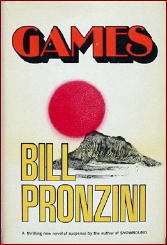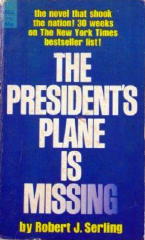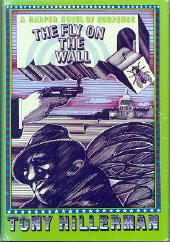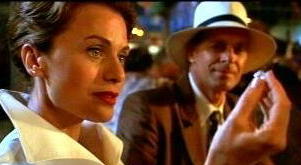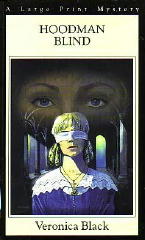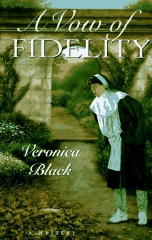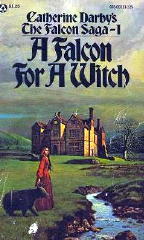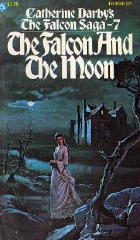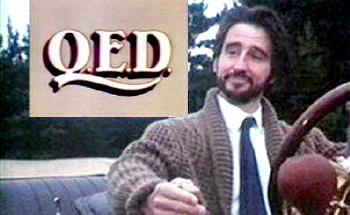May 2008
Monthly Archive
Thu 29 May 2008
ANNE ROWE – Too Much Poison.
Detective Book Club; 3-in-1 edition; hardcover reprint, January 1945. Hardcover first edition: M. S. Mill, 1944.
I love old mysteries. It’s like taking a small time capsule into the past, a past seldom written about in history books. The past that people actually lived in, everyday people, in all walks of life.
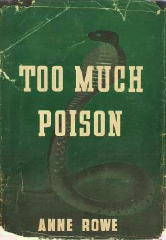
Including the Manhattan social set. Strangely enough, the war is never mentioned in this wartime mystery, a cheery sort of world, yet with a hint of tragedy hiding behind the curtains. Mona Carstairs, the secretary-nurse to a doctor slowly establishing himself, has secretly been married to him for three years, supporting and nurturing him. And now, as he is on the verge of success, he has found a new lady friend, very young, petite and silvery blonde.
That’s the story as it begins, and it probably has you yawning already. The mystery itself, two deaths by exotic cobra poison, is much more complicated. I won’t go into it in any more detail, but there are quite a few suspects, all in social circles that wouldn’t allow me in, but it’s quite a pleasure to read about them.
Coming to Mona’s aid — as she gradually becomes Inspector Barry’s primary suspect — is Cliff Mallory, a son of one of Barry’s former colleagues on the force, as well as a cousin of Dr. Carstair’s new flame, a renown polo player, and now a knight in armor and an amateur detective to boot.
Any resemblance to actual police procedure seems purely coincidental, although I would admit that standards may have differed then from what I see on NYPD Blue now. But the mystery is definitely taken seriously by Anne Rowe, with lots of clues and false trails scattered throughout, giving the fan of amateur detective fiction quite a bit to puzzle over.
[ Four stars (out of five). ] — January 2001.
[UPDATE.] 05-29-08. I’m going to assume that not only is the book is forgotten, but so is the author. While this is the only book of Anne Rowe’s book that I’ve read, posting this review from over seven years ago makes me want to read more of them.
To that end, if you’re also so inclined, here’s a complete list, thanks to Al Hubin and his Crime Fiction IV. Except for the one marked UK, listed are only the US editions and titles. (I have a feeling that some of these are going to be hard to find.)
ROWE, ANNE (Von Meibom) (1901?-1975?)
* The Turn of a Wheel (n.) Macaulay 1930
* -Men Are Strange Lovers (n.) King 1935
* Curiosity Killed a Cat (n.) Morrow 1941 [Insp. Josiah Pettengill; Maine]
* The Little Dog Barked (n.) Morrow 1942 [Insp. Josiah Pettengill; Maine; Theatre]
* Too Much Poison (n.) Mill 1944 [Insp. Barry; New York City, NY]
* Fatal Purchase (n.) Mill 1945 [Maine]
* The Painted Monster (n.) Gifford-UK 1945 [Insp. Josiah Pettengill]
* Up to the Hilt (n.) Mill 1945 [Insp. Barry; Connecticut]
* Deadly Intent (n.) Mill 1946 [Insp. Barry; New York City, NY]
Thu 29 May 2008
Posted by Steve under
Columns ,
ReviewsNo Comments
IT’S ABOUT CRIME
by Marvin Lachman
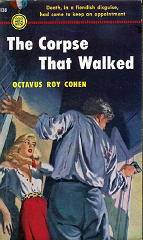
Octavus Roy Cohen’s 1951 paperback original, The Corpse That Walked, is based on his 1942 novelet in Collier’s “Masquerade in Miami.” It contains many surprises, but perhaps this is to be expected since it comes from an era when story-telling, without unnecessary descriptions or metaphors, was important. I found very quaint (yet imaginative) the devices Cohen used to avoid mentioning sex.
Hesitancy about sex (or violence) is seldom found in current mystery fiction. Witness Bill Pronzini’s Games (1976). U.S. Senator David Jackman is trapped, with his mistress, on an island off the Maine coast. A killer, acting “in the name of Lucifer,” begins slaughtering animals and threatening the couple. Because the protagonists are so unsympathetic and uninteresting, I never really came to care about them. That’s a pity, because Pronzini can write so well – especially in his “Nameless” Private Eye series.
I was about to ask for a moratorium on books about political figures in high places when I read two thrillers proving that Washington, D.C., can be an effective setting. Though a best seller, Robert J. Serling’s The President’s Plane Is Missing (1967) contains many elements of the detective story. Suspense and surprise are real in this much-imitated book, though the cast of characters is too large to keep effective track of, and the proceedings are a bit dragged out.
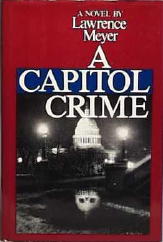
In Lawrence Meyer’s equally readable A Capitol Crime (1977), the detective is that modern folk hero, the investigative reporter. Incidentally, when someone writes a history of that sub-genre, precedence should be given to Tony Hillerman’s The Fly on the Wall (1971) which pre-dated Watergate and Bernstein-Woodward.
Meyer’s hero looks into the murder of a Drew Pearson-Jack Anderson type in the Capitol building itself. Like Serling, Meyer introduces too many characters, but he, too, is a fine story teller who provides a literally breath-taking end. Furthermore, his book is as current as today’s headlines, and he seamlessly weaves foreign ownership of U.S. corporations, limits on campaign contributions, and the right of police to a reporter’s notes into his plot.
Books reviewed or discussed in this installment:
OCTAVUS ROY COHEN – The Corpse That Walked. Gold Medal 138, paperback original, 1951. Second printing: Gold Medal 650, 1957.
BILL PRONZINI – Games. G. P. Putnam’s Sons, hardcover, 1976. Fawcett Crest 23484, paperback, date not stated. Combined with Snowbound: Stark House, trade ppbk, 2007.
ROBERT J. SERLING – The President’s Plane Is Missing. Doubleday, hardcover, 1967. Dell, paperback, many printings. TV movie: ABC, 1973 (scw: Ernest Kinoy, Mark Carliner; dir: Daryl Duke)
LAWRENCE MEYER – A Capitol Crime. Viking, hardcover, 1977. Avon, paperback, 1978; several printings.
TONY HILLERMAN – The Fly on the Wall. Harper & Row, hardcover, 1971. Many paperback reprintings.
Reprinted from the
The MYSTERY FANcier, Mar-Apr 1979.
Thu 29 May 2008
Posted by Steve under
ReviewsNo Comments
REVIEWED BY WALTER ALBERT:
KATHERINE KURTZ & DEBORAH TURNER HARRIS: “The Adept” series.
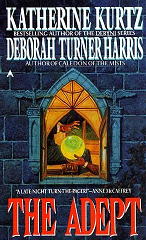
“The first of five novels in a series featuring Sir Adam Sinclair, ‘more than a doctor, more than a detective…’ He’s a psychic sleuth, member of an ancient order of white magicians belonging to the order of Templar Knights who are always on the alert to threats to members of their order from the ‘Dark Roads where the black magicians travel.’”
Thus began my review of The Adept (Ace, 1991) when I read it back in 1998. I concluded by saying that I liked the first novel in the series well enough – in spite of a certain excessive fondness by the authors for sartorial details arid interior decoration – to go on to the second novel.
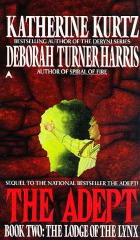
And there the matter lay, until, one gloomy day in late December of 2007 or early January of 2008 I happened upon the unread succeeding four novels, started number two in the series.
Almost without realizing it, found myself launched on a whirlwind tour of The Adept, Book Two: The Lodge of the Lynx (Ace, 1992), Book Three: The Templar Treasure (Ace, 1993), Dagger Magic (Ace, 1996), and Death of an Adept (Ace, 1997).
The excessive interest in details of clothing and setting diminished somewhat, and the plots continued to put Sir Adam and his two closest Associates, Peregrine Lovat, a talented painter of portraits, especially sensitive to psychic layers in his subjects, and DCI Noel Mcleod, a gifted medium, and other members of their circle, as well as the general public, at great risk of losing their immortal souls in the never-ending battles with powerful adepts of the dark arts.
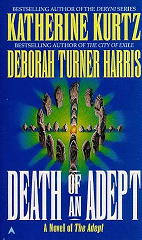
In the final novel, Sir Adam is happily married, and his circle’s most notorious foe, dark adept Francis Raeburn, has finally been destroyed, ripped to shreds by one of the demons he had invoked.
And yet, as Sir Adam and his wife drive off in their classic Bentley, they are observed by a man driving a car with a single passenger, a woman “with heavily bandaged hands, whose painted lips curled in studied malice as the Bentley slipped away into traffic.”
A rather curious way to conclude the series, which makes me wonder if another novel was planned but not published. Or just a way of reminding the reader that the battle against evil never ends.
Wed 28 May 2008
THE DIAMOND OF JERU. Made for cable TV (USA), 2001. Billy Zane, Paris Jefferson, Keith Carradine, Jackson Raine. Based on a story by Louis L’Amour. Teleplay by Beau L’Amour [also co-executive producer]. Directors: Ian Barry, Dick Lowry.
This movie has come up once before on this blog. It was back here, when I reviewed Off the Mangrove Coast, the Louis L’Amour collection where you can read the story the film was based on.
Here’s the relevant portion of what I had to say back then:
“The two best stories are the title story, about diving for treasure in the South China Sea, and a longer one about hunting for diamonds in the jungles of Borneo, infested with headhunters.”
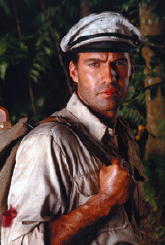
This one’s the latter. Billy Zane plays Mike Kardek, the guide first hired by Helen and John Lacklan (Paris Jefferson and Keith Carradine), only to be fired when Mr. Lacklan thinks something is going on between Kardek and Mrs. Lacklan. (Eyes only, nothing more. Nor anything less, for that matter, and sometimes it does.)
Paris Jefferson, by the way, played the goddess Athena in the Xena television series just before her role in this movie. She has one of those faces that seems to change when viewed from different directions and in different contexts and scenes. I’ve found a number of shots taken from the movie to help illustrate. I do not know why this is the last movie she seems to have made.
Kardek is an American adventurer down on his luck and stranded in Borneo with no funds to make the trip back home. The year is 1955. I was going to say “rugged American adventurer,” but he’s too good-looking to be able to say that with a straight face.
Mr. Lacklan is an atomic scientist from the lab in Los Alamos, New Mexico, the kind of guy that thinks that saying he is an American will pave his way into being allowed to do anything he wants anywhere in the world.
Mrs. Lacklan is too much of a restless spirit to stay cooped up in such an isolated community, and boredom has begun to creep into their marriage. One solution: a trip to Borneo to find a diamond to fit the (deliberately) empty spot in her wedding ring. She also reads books, one way perhaps to get the romance in her life that’s also missing.
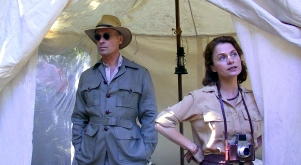
As I say, Kardek is fired, and the Lacklans tie up instead with a gang of natives Kardek is sure is connected with Jeru, the chief of a tribe of headhunters in the interior of the island. Sure enough he is right, and hence the story.
Which is beautifully filmed, I must tell you. Equally beautifully recreated are the scenes of the open marketplace along the wharf, where small boats come in to drop off visitors such as the Lacklans. Linen suits for the non-native men, sarongs for the native women, hustle and bustle – totally authentic.
The story line is exactly the same as that of L’Amour’s original tale, apparently never published and found in a trunk only after his death. Certain aspects are built up – of necessity, as the original, in print, is only 50 to 60 pages long – but the core of the story does not really involve diamonds, as suggested by its title. This is really a tale of love and romance. A hidden, sublimated one in this case, but a romance, none the less.

And a tale of a marriage that is in trouble, too, and by the story’s end, it is in even more trouble, since of the two, Mr. and Mrs. Lacklan, it is the latter who had …
And a good tale because of it, but about which I will not say more. The fact remains, this is no The African Queen, no matter how many times the cast and crew refer to it in the interview tidbits provided as a bonus on the DVD. Nor is it Key Largo, or Casablanca.
As a movie made for cable TV, it’s one of the better ones. Nonetheless and overall, it’s little more than a rousingly good pulp adventure tale, and it’s quite unfair to the film for what it is to make comparisons such as the ones above, even if it’s the people involved who are making them.
Tue 27 May 2008
FIRST YOU READ, THEN YOU WRITE
by Francis M. Nevins
There’s a general rule to which the most conspicuous exception in our genre is Agatha Christie: when an author dies, his work dies too. Certainly Aaron Marc Stein’s has. He was born in 1906, graduated summa cum laude from Princeton, wrote a couple of avant-garde novels which were published thanks to endorsements from Theodore Dreiser, then turned to mystery fiction under the pseudonym of George Bagby and, a few years later, under his own name too.

He quickly learned how to parlay his day jobs and other activities into backgrounds for the early Bagby novels, using his time as radio critic for a New York paper to create his own station in Murder on the Nose (1938), dipping into his memories of apparently liquor-soaked Princeton reunions for The Corpse with the Purple Thighs (1939), employing his stint at the madhouse known as Time magazine in Red Is for Killing (1941).
During World War II he abandoned fiction to serve as an Army cryptographer, but after the war he became a full-time author and wrote so prolifically and skillfully that in the early 1950s, when he was turning out four or more titles a year, New York Times mystery critic Anthony Boucher called him the most reliable professional detective novelist in the United States.
Between 1935 and his death half a century later he produced an astounding 110 book-length mysteries: 51 as Bagby chronicling the cases of the NYPD’s sore-footed Inspector Schmidt; 18 as Hampton Stone about New York Assistant District Attorneys Gibson and Mac; 18 under his own name with the archaeologist-detective duo of Tim Mulligan and Elsie Mae Hunt as protagonists and, when his publishers demanded stronger beer in their Steins, 23 with adventurous civil engineer Matt Erridge in the lead.

Factor in his one non-crime novel as Bagby plus one stand-alone crime novel under his own name and those two early literary experiments and you have a total of 114 books. He also wrote occasional short stories, which cry out to be collected. Most of his Bagby and Stone novels are set in and around New York, which Aaron knew and loved and characterized as vividly as any of his human beings, while most of his orthonymous books feature exotic locales in Central and South America or Europe.
I had been reading him since my teens but never got to spend quality time with him until the mid-1970s when we both joined the board of the University of California’s Mystery Library, and we remained friends for the rest of his life. In 1979 he received the Grand Master award from Mystery Writers of America. Later he and I served together on the board of Bantam s Collection of Mystery Classics.
His health was failing but he continued to turn out a book or two a year well into his seventies. Acclaimed by colleagues and connoisseurs, he never attained the popular success he so richly deserved. He died of cancer in 1985. That was almost a quarter century ago but I still remember him fondly.

Since the early 1960s he had lived in a co-op on Park Avenue and 88th Street with his sister Miriam-Ann Hagen (who also wrote a few whodunits of her own) and her husband Joe. They had bought it for $34,000 which they’d won gambling at Las Vegas in a single night. At the time of his death the unit was worth well over a million. In effect he had an apartment inside the apartment, and after he and Miriam had died Joe invited me to stay in Aaron’s quarters whenever I was in New York – which allowed me the unique experience of reading several of Aaron’s later novels in the room where he’d written them.
For most readers today his huge body of work remains an undiscovered treasure. Any who care to remedy that loss would do well to begin with his books from the years when he earned that accolade from Boucher: perhaps the Bagby titles Drop Dead (1949) and Dead Drunk (1953), or The Girl with the Hole in Her Head (1949) as by Stone, or Days of Misfortune (1949) under his own name. I still reread him regularly and with pleasure.
Of all the 20th-century poets who made significant contributions to the whodunit, our Poetry Corner guest this month is probably the most distinguished. Cecil Day-Lewis (1904-1972) is best known today as the father of actor Daniel Day-Lewis, but in his lifetime he served as England’s Poet Laureate and, as Nicholas Blake, the creator of amateur sleuth Nigel Strangeways, he was considered one of the finest crime novelists of his generation.

He combined both interests in the Strangeways novel Head of a Traveler (1949), which Thomas M. Leitch summarized superbly in his chapter on Blake for Volume One of Mystery and Suspense Writers: The Literature of Crime, Detection, and Espionage (1998). “The central figure is the distinguished poet Robert Seaton, whose household is destroyed by the unexpected discovery of his brother Oswald’s decapitated corpse….[T]he real interest of the novel is in its impassioned examination of the costs of poetry – the lengths to which poets and those who love them will go in pursuit of their craft.”
Anthony Boucher, reviewing the novel in his “Speaking of Crime” column (Ellery Queen’s Mystery Magazine, August 1949), suggested that “Blake knows so much about his theme, the nature of poetic creation, that he never quite conveys it convincingly to the reader.” But those with twin passions for poetry and mystery fiction may well find Head of a Traveler the single most rewarding whodunit they’ve ever read.

As one whose usual breakfast is fruit and a piece of whole-grain toast, I am avocado-green with envy at the morning meals characters like Nero Wolfe can tuck away. But Wolfe’s most lavish spread seems Spartan next to that of Walter Kilbourne, the cartoonish take on Sydney Greenstreet in Ross Macdonald’s second Lew Archer novel, The Drowning Pool (1950):
“He ate with a gobbling passion. A piece of ham and four eggs, six pieces of toast; a kidney and a pair of mountain trout; eight pancakes with eight small sausages; a quart of raspberries, a pint of cream, a quart of coffee. I watched him the way you watch the animals at the zoo, hoping he’d choke to death….”
What, no platter of cream-filled tortes for dessert?
Just as this column was about to sail off into cyberspace to its destination came the news that Sydney Pollack died of cancer on Memorial Day at age 73. He was a Hoosier, born in Lafayette, Indiana on July 1, 1934, and began his show-business career as an actor. In the early Sixties he moved into directing and helmed episodes of many network TV crime-suspense series including Cain’s Hundred, Target: The Corruptors, The Alfred Hitchcock Hour, The Defenders, The Fugitive.
His Hitchcock episode “The Black Curtain” (November 16, 1962) was nominally based on Cornell Woolrich’s 1941 noir novel of the same name but had almost nothing in common with the book except for the springboard situation as Frank Townsend (Richard Basehart) recovers from a second blow on the head and learns that for the past few years he’s been suffering from amnesia and leading another life.
Pollack’s most successful feature-length contributions to our genre were the cynical thrillers Three Days of the Condor (1975) and The Firm (1993), whose bad guys were respectively the CIA and the legal profession: not bad choices at all.
Sun 25 May 2008
When I received word of the death of Maureen Peters from John Herrington yesterday, I emailed my daughter Sarah immediately, as she’s the historical fiction expert in the family, and I thought she’d like to know. While Maureen Peters wrote a sizable number of books included in the Revised Crime Fiction IV, by Allen J. Hubin, under her own name she was known far more for her fiction about the past, most often re-creating the lives of women born to royalty.
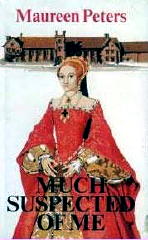

Here’s a portion of Sarah’s opening paragraphs about Maureen Peters on her blog, Reading the Past:
“… She was born in Caernarvon, Wales, on March 3, 1935, and was married and divorced twice; she has two sons and two daughters. In addition to the novels written under her own name, which were historical fiction, she also wrote as Veronica Black, Catherine Darby, Belinda Grey, Elizabeth Law, Levanah Lloyd, Judith Rothman, and Sharon Whitby.
“Her novels, which easily number over one hundred, fall into many categories: biographical fiction on royalty (written under her own name), Gothic romances, family sagas, Mills & Boon series titles, contemporary mysteries (her Sister Joan series was written as Veronica Black), and more.”
There you have it. The secret is out. In the world of mystery fiction, Maureen Peters is far better well known as Veronica Black than she is as her own. For the rest of Sarah’s overview of her career, please follow the link above, and I hope you do.
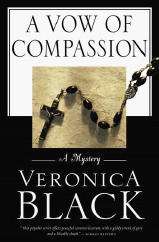
For more about Sister Joan, the contemporary nun who is the series character in many of the Veronica Black books, see this page on Philip Grosset’s website dedicated to clerical detectives:
Said Maureen Peters about Sister Joan in an interview with her that you can find online:
“I chose a nun because they have got a lot of time on their hands. I have friends who are real nuns and they give me information on their lives, but mine’s a bit more unconventional. Every time she goes to a convent, she finds a dead body — Cornwall is littered with them.”
As Catherine Darby, Maureen Peters wrote books that were sold as Gothics, such as the 12 books in the “Falcon Saga,” but were really what Sarah calls “dark family sagas.” Or more precisely, she describes their plot lines this way: “Themes of illicit passion, family rivalry, witchcraft, revenge, and even reincarnation permeated the novels…”
BIBLIOGRAPHY. Crime Fiction only.
[Expanded and revised from her entries in CFIV; British editions only, except as noted.]
PETERS, MAUREEN (1935-2008). Pseudonyms: Veronica Black, Catherine Darby, Elizabeth Law & Judith Rothman.
Valentine (Hale, 2000, hc) SC: Tansy Clark. [London; Victorian]
Verity (Hale, 2002, hc) SC: Tansy Clark. [London; 1870s]
Vashti (Hale, 2006, hc) SC: Tansy Clark. [London; 1870s]
BLACK, VERONICA
Dangerous Inheritance (n.) Hale 1969 [England]
Portrait of Sarah (n.) Hale 1969 [England]
The Wayward Madonna (n.) Hale 1970 [England]
A Footfall in the Mist (n.) Hale 1971 [England]
Master of Malcarew (n.) Hale 1971 [England]
The Enchanted Grotto (n.) Hale 1972 [England]
Fair Kilmeny (n.) Hale 1972 [England]
Moonflete (n.) Hale 1972 [England]
Minstrel’s Leap (n.) Hale 1973 [England]
The House That Hated People (n.) Hale 1974 [England]
Spin Me a Shadow (n.) Hale 1974 [England]
Echo of Margaret (n.) Hale 1978 [England]
Greengirl (n.) Hale 1979 [England]
Pilgrim of Desire (n.) Hale 1979 [England]
Flame in the Snow (n.) Hale 1980 [England]
-Lover Dark, Lady Fair (n.) Hale 1983 [England]
Hoodman Blind (n.) Hale 1984
Last Seen Wearing (n.) Hale 1990 [England]
A Vow of Silence (n.) Hale 1990 [Sister Joan; England]
Vow of Chastity (n.) Hale 1991 [Sister Joan; England]
My Name Is Polly Winter (n.) Hale 1992 [England]
A Vow of Obedience (n.) Hale 1993 [Sister Joan; England]
A Vow of Sanctity (n.) Hale 1993 [Sister Joan; Scotland]
A Vow of Devotion (n.) Hale 1994 [Sister Joan; England]
A Vow of Penance (n.) Hale 1994 [Sister Joan; England]
A Vow of Fidelity (n.) Hale 1995 [Sister Joan; England]
A Vow of Adoration (n.) Hale 1996 [Sister Joan; England]
Vow of Poverty (n.) Hale 1996 [Sister Joan; England]
A Vow of Compassion (n.) Hale 1997 [Sister Joan; England]
Vow of Evil (n.) Hale 2004 [Sister Joan; England]
DARBY, CATHERINE [All were published first in the US as paperback originals.]
-A Falcon for a Witch (n.) Popular Library 1975 [Falcon Saga #1; England; 1910 ca.]
-The King’s Falcon (n.) Popular Library 1975 [Falcon Saga #2; England; 1644]
-Fortune for a Falcon (n.) Popular Library 1975 [Falcon Saga #3; England]
-Season of the Falcon (n.) Popular Library 1976 [Falcon Saga #4; England; 1774]
-Falcon Royal (n.) Popular Library 1976 [Falcon Saga #5; England]
-The Falcon Tree (n.) Popular Library 1976 [Falcon Saga #6; England; 1841]
-The Falcon and the Moon (n.) Popular Library 1976 [Falcon Saga #7; England; 1886]
-Falcon Rising (n.) Popular Library 1976 [Falcon Saga #8; England; 1818]
-Falcon Sunset (n.) Popular Library 1976 [Falcon Saga #9; England; 1916]
Whisper Down the Moon (n.) Popular Library 1977 [Moon Chalice Quest #1; England]
Frost on the Moon (n.) Popular Library 1977 [Moon Chalice Quest #2; England]
The Flaunting Moon (n.) Popular Library 1977 [Moon Chalice Quest #3; England; 1644]
Sing Me a Moon (n.) Popular Library 1977 [Moon Chalice Quest #4; England]
Cobweb Across the Moon (n.) Popular Library 1978 [Moon Chalice Quest #5; England]
Moon in Pisces (n.) Popular Library 1978 [Moon Chalice Quest #6; England; 1800s]
-Seed of the Falcon (n.) Popular Library 1978 [Falcon Saga #10; England]
-Falcon’s Claw (n.) Popular Library 1978 [Falcon Saga #11; England; 1399]
-Falcon to the Lure (n.) Popular Library 1978 [Falcon Saga #12; England]
LAW, ELIZABETH
The Sealed Knot (n.) Walker 1989 [Scotland; 1811]
ROTHMAN, JUDITH
With Murder in Mind (n.) Hale 1975
For a complete listing of all of Maureen Peters’ fiction, see the Fantastic Fiction webpage for her.
Sun 25 May 2008
Q. E. D. CBS, 1982. Cast listed below.
“Q. E. D.” are the initials of Professor Quentin Everett Deverill (Sam Waterston) who, on a self-initiated exile from Harvard University in the year 1912, ends up in England, where he puts his scientific abilities to good use in having a fine time going on far-fetched adventures and solving crimes, and in the process, saving the world more than once.
I only vaguely remember this series when it was on. It lasted only six weeks, although I’m sure more were planned. The sets and general ambiance, with the series filmed in the UK, are nicely (if not lavishly) done. The performances are doubly fine — I’ll get to the primary cast shortly — but the stories themselves are creaky and old, disconnected and disjointed, too short of material for the hour time slot, and frankly, rather dull.
I’ve found a few photos to use here on the blog, and since I still don’t know how to embed videos here, you’ll have to follow the link to see a long clip from the first show, including the opening credits, complete with the light-hearted type of music that signifies that this is going to be a comedy as well as a serious adventure. (And how can you not look at Sam Waterston in the image above and not at least smile?)
But when you watch too many episodes in as short a time as I did — just over a week — the music will also all but drive you up a wall, or into a moat, or some such more or less drastic means of trying to avoid it.
Cast:
Sam Waterston — Professor Deverill. An engaging light-hearted performance that’s pitch perfect for the part.
A. C. Weary — Charlie Andrews. American newspaper reporter based in England.
George Innes — Phipps. Cockney taxicab driver hired by Deverill as a chauffeur, butler, valet, lab assistant, and cook.
Caroline Langrishe — Jenny Martin. Deverill’s secretary and secret admirer, although Charlie’s eyes are always fondly looking upon her. (She suddenly appears at the beginning of the second episode, not having been in the first, which ends with another young woman apparently having taken the job.)
Julian Glover — Dr. Stefan Kilkiss. Deverill’s nemesis, the man who would rule the world by various nefarious means, only to be thwarted several times over the course of the series.
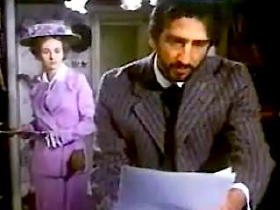
Thankfully, though, Kilkiss’s role is dropped by the fourth episode, his name and face no longer appearing in the opening credits. There are, after all, only so many ways, someone can take over the world, even a diabolically clever genius.
Having been kept from firing rockets at London in the first episode and the pilot for the series, there is only one way to go from there, and that’s down. Assassination plots and the winning of motor races simply do not compare, either in magnitude or innate possibilities.
When I saw Deverill described by wikipedia as being a Sherlock Holmes type of mystery solver in Edwardian England, I jumped at the chance to obtain DVDs of the complete series, but alas! There is very little deduction, although the last two shows seemed be heading in that direction, but unfortunately, too late.
Episode list:
1. 03-23-82. Target: London.
2. 03-30-82. The Great Motor Race.
3. 04-06-82. Infernal Device.
4. 04-13-82. The 4:10 to Zurich.
5. 04-20-82. To Catch a Ghost.
6. 04-27-82. The Limehouse Connection.
In “To Catch a Ghost,” for example, Deverill and company are required to find the culprit behind the ghosts haunting Jenny’s aunt’s castle of a home, and perhaps it’s the best episode of the series. “The Limehouse Connection” is the grittiest of the six, taking place as it does in the opium dens of Limehouse, London’s original Chinatown, and the underground boxing matches of the era, but I’d also have to add that when you get down to details, the story itself doesn’t hold a lot of water.
In spite of the weak plots that contained too much filler for this fellow — the uniformly favorable comments by others on IMDB are due to a rather common combination of nostalgia and faulty memories — I grew fond of the cast over the course of the six episodes and ten evenings, and believe it or not — faults and all — I would have willingly watched more of them if I could have.
Sat 24 May 2008
Taken from Part 27 of the ongoing online Addenda to the Revised Crime Fiction IV, by Allen J. Hubin. The work of only two authors is cited in this posting, but with the number of pen names each of them had, it may make it seem as though there were more.
BRETT, JOHN MICHAEL. Pseudonym of Miles Tripp, 1923-2000, q.v.; other pseudonym: Michael Brett, q.v. Under these two pen names, the author of three adventures of Hugo Baron, an agent who works for a British organization called Diecast.
A Cargo of Spent Evil. Barker, UK, hc, 1966. SC: Hugo Baron. Add setting: England, Germany. [On this assignment Baron poses as a Neo-Nazi sympathizer.] Shown is the cover of the reprint Pan edition.
_Diecast. Pan, UK, pb, 1966. Previously published as by Michael Brett. [Add this edition.]
A Plague of Dragons. Barker, UK, hc, 1965. SC: Hugo Baron. Setting: Africa.
BRETT, MICHAEL. Pseudonym of Miles Tripp, 1923-2000, q.v.; other pseudonym: John Michael Brett, q.v.
Diecast. Barker, UK, hc, 1964. Gold Medal, US, pb, 1963. Add: also published as by John Michael Brett: Pan, UK, pb, 1966. SC: Hugo Baron.
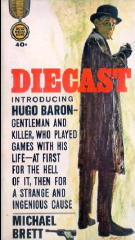
FORBES, COLIN. Pseudonym of Raymond H. Sawkins, 1923-2006, q.v.; other pseudonyms: Jay Bernard & Richard Raine. Born in London; served in North Africa in World War II before joining a publishing and printing firm. Under this pen name, the author of over 30 novels of espionage, action and adventure. Appearing in many of them is a man called Tweed, the Deputy Director of the Secret Intelligence Service. For a long article on Forbes after his passing by Iwan Morelius, a long-time friend, see this earlier post on the Mystery*File blog.
The Janus Man. Collins; UK, hc, 1987. Harcourt, US, hc, 1988. SC: Tweed. Add setting: Europe. [Tweed hunts a killer working on Moscow’s orders; one of four European section chiefs is working for the other side.] Shown is the cover of the reprint Pan edition.
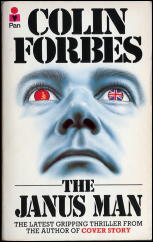
SAWKINS, RAYMOND H. 1923-2006. Pseudonyms: Colin Forbes, q.v., Jay Bernard & Richard Raine. Best known for his works of espionage, mystery and adventure under the Colin Forbes byline. Under his own name, the author of three detective novels featuring Supt. John Snow. One of these is shown below (Heinemann, 1966).
TRIPP, MILES. 1923-2000. Pseudonyms: John Michael Brett, Michael Brett, qq.v. Born in England, served in RAF Bomber Command during World War II. Studied law and admitted as a solictor in 1952. Under his own name, the author of over 30 crime and detective novels included in the Revised Crime Fiction IV. Fourteen of these featured a private eye named John Samson; one of these is shown below (Severn House, 1999).
Sat 24 May 2008
Hi,
I’ve been looking for information about author Alan Williams (son of Emlyn) for a while now but haven’t come up with much until I found your very informative blog just now. I know his brother Brook passed away a couple of years ago, so I’ve been wondering if Alan is still alive.
I would really like to get in touch with him. Do you have any leads I could follow? I’d be very grateful. Thank you.
Best wishes,
Susan
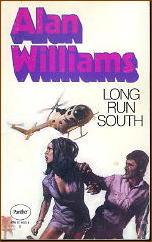
The link above leads to an installment of the online Addenda to the Revised Crime Fiction IV, which contained an entry for Williams. He was born in 1935, with no known year of death. In fact, there’s very little information about him available online. The short bio I wrote for him in the Addenda entry is about all I could come up with.
Al Hubin, when I asked him, said in reply that he’d discovered much the same thing, which was nothing:
Steve,
Alan Williams is curiously absent from standard author reference works. I suppose it’s possible he’s in one edition or another of Authors and Writers Who’s Who but he’s not in the couple that I have. His death is not recorded in findmypast.com, which only means he didn’t die in England/Wales in the period 1984-2006…
Not much help, I’m afraid.
Al
And at this point in time, this is as far as we’ve gotten. Assistance, if any, would be welcome.
[UPDATE] 07-14-08. I’m over a week delayed in posting this, but today’s better than tomorrow, at least. I heard from one source who’d prefer to stay anonymous, but who had a lot to say about Alan Williams and his career, none of it substantial enough to put online.
I passed the information on to Susan, though, who replied with thanks. She also added: “I heard from a distant relative who says he is still with us.” She’s now trying to see if she can speak to him, “if I’m lucky enough to do so.”
More later, it may be, if things work out the way she hopes.
Sat 24 May 2008
Steve
I have now updated the blackhorsewesterns.com site with the June-August offerings. You may find it of general interest, since various topics like library distribution and author rewards are touched upon in the content, and these apply as much to mystery as other light fiction.
Best as always,
Keith (aka Chap O’Keefe)
Thanks, Keith. I recommend the site highly to everyone who’s reading this, especially if you’re interested at all in the current state of genre fiction. Topics include:
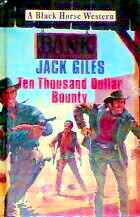
1. The present market for western fiction. (Black Horse, an imprint of the UK publisher Robert Hale, is one of the few lines still committed to westerns, putting out 8 to 10 a month.)
2. Plot or Not? A long panel discussion by several Black Horse writers concerning how much plotting should be done ahead of time.
3. News and events in the world of western fiction.
4. An interview with Ray Foster, who as Jack Giles, had to regain most of his memory after a stroke before he could start writing again.
One telling (and rather discouraging) paragraph came up in the panel discussion, which I’ll quote in full:
“Most fiction writers are back to being, like many Victorian forerunners, hobbyists, part-timers. As BHW publisher John Hale has pointed out, ‘I am only too well aware of the low rewards to authors on these westerns, particularly in the light of continuing inflation. However, the sad fact is that if we had to pay more we would have to stop publishing them. Writing westerns for us really has to be regarded as a labour of love.'”
Next Page »



